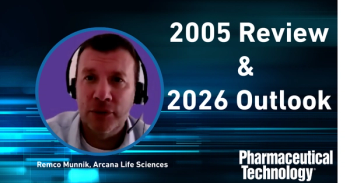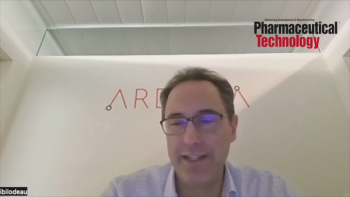
- Pharmaceutical Technology September 2025
- Volume 49
- Issue 7
- Pages: 26–29
Optimizing Testing in Cell and Gene Therapy: A Key Driver for Industry Growth and Adoption
Key Takeaways
- Cell and gene therapies require novel quality control methods due to their complex, variable nature and limited shelf life, challenging traditional pharmaceutical testing approaches.
- Manufacturers must develop strategies to maximize information from minimal samples, ensuring product availability for therapeutic use while maintaining raw material consistency.
The scaled adoption of cell and gene therapies demands a new era of agile, precise, and efficient quality control methods. Manufacturers and diagnostic partners must collaborate to create innovative, compliant testing strategies that preserve product integrity, meet tight timelines, and deliver life-saving treatments faster.
As personalized, life-saving treatments advance with the widespread adoption of cell and gene therapies (CGTs), diagnostic quality control partners face a critical challenge: adapting traditional methods to meet faster production timelines and the limited shelf life of cell therapy products while ensuring accuracy and reliability in results. The urgency of delivering these therapies to patients necessitates a reevaluation of existing quality control frameworks. Traditional methods that may have been sufficient for conventional pharmaceuticals often fall short when applied to the dynamic and sensitive nature of cell and gene therapies. This adaptation requires not only technological innovation but also a shift in mindset toward more agile and responsive quality control processes.
New therapies, new quality control processes
Cell and gene therapy manufacturers face significant quality control testing challenges due to the complex and highly variable nature of these therapies. One of the primary challenges is the need to develop novel testing methods that can accurately assess the unique attributes of these products. Unlike traditional pharmaceuticals, cell and gene therapies are living products, which means their characteristics can change over time and under different conditions. This variability necessitates the development of testing methods that can provide reliable and reproducible results despite these fluctuations.
Additionally, the limited number of viable sampling strategies poses a significant hurdle. Given the precious and often scarce nature of cell and gene therapy products, extensive sampling for quality control purposes is not always feasible. Manufacturers must therefore devise strategies that maximize the information obtained from minimal sample volumes, ensuring that enough product remains available for therapeutic use. Concerns over raw material consistency further complicate the quality control landscape. The biological nature of these therapies means that raw materials can vary significantly from batch to batch, potentially impacting the final product's quality and efficacy. Ensuring consistency in raw materials is crucial for maintaining the integrity of the therapy.
The potential for cross-contamination is another critical concern. The manufacturing processes for cell and gene therapies often involve handling multiple products simultaneously, increasing the risk of cross-contamination. Implementing stringent contamination control measures is essential to prevent this and ensure the safety and purity of the final product. Moreover, the need for rapid results to minimize patient wait times adds another layer of complexity. Patients awaiting cell and gene therapies often have urgent medical needs, making timely delivery of these treatments critical. Quality control processes must therefore be optimized to provide quick and accurate results without compromising on thoroughness.
All these challenges must be addressed while adhering to strict regulatory standards. Regulatory bodies have established rigorous guidelines to ensure the safety, efficacy, and quality of cell and gene therapies. Manufacturers must navigate these regulations carefully, ensuring that their quality control processes meet all necessary requirements.
Minimizing 'over-testing' to maximize product
An emerging consideration unique to cell and gene therapies is the need to develop a testing plan that minimizes over-testing, thereby maximizing the amount of sample, or product, available for patient use. This is particularly important given the often-limited availability of these highly specialized and valuable products. Strategic decisions in testing—such as choosing the right testing partner, streamlining upstream and downstream processes, and ensuring automation and accuracy—can facilitate a faster, more efficient path from lab to patient. By carefully selecting a testing partner with expertise in cell and gene therapies, companies can leverage specialized knowledge and advanced technologies to optimize their testing protocols.
Furthermore, because no two facilities or products are identical in the cell and gene therapy space, diagnostic partners are uniquely positioned to holistically analyze a customer’s development and manufacturing processes. They can provide tailored recommendations to enhance testing efficiency and develop new analytical methods. For instance, next-generation sequencing can be employed to accurately assess critical quality attributes such as cell viability, purity, potency, and genetic integrity. This level of precision is crucial for novel cell and gene therapy products where standard assays may not be suitable. Additionally, diagnostic partners can assist in the validation and implementation of these new methods, ensuring they meet regulatory requirements and industry standards.
Moreover, the dynamic nature of cell and gene therapy development necessitates a flexible and adaptive approach to testing. As new technologies and methodologies emerge, continuous collaboration with diagnostic partners can help companies stay at the forefront of innovation. These types of ongoing partnerships can lead to the discovery of more efficient testing strategies, ultimately reducing time-to-market and improving patient outcomes. By investing in robust testing frameworks and fostering strong relationships with diagnostic partners, companies can navigate the complexities of cell and gene therapy development more effectively.
Unique quality considerations for CGT
Recently, bioMérieux has collaborated with various customers to develop customized testing plans that address the unique needs of individual facilities and products across multiple categories in relation to mycoplasma testing. This collaboration has been instrumental in ensuring that the testing protocols are tailored to the specific requirements of each facility, thereby enhancing the accuracy and reliability of the results.
During these conversations, several themes common to a collaborative approach have been regularly mentioned. They are as follows:
Cell density. When a sample has a higher cell density, testing an entire batch becomes impractical due to volume and resource constraints. High cell density can lead to challenges in sample handling and processing, making it difficult to obtain representative results from a single batch. The rapid advancement of cell and gene therapy has resulted in limited FDA guidance on the appropriate batch volume to test and whether the focus should be on the cells or the matrix. This lack of clear regulatory direction can create uncertainty for manufacturers, who must balance the need for thorough testing with the practical limitations of their processes. In such scenarios, an experienced partner can provide valuable guidance as new regulations are introduced. By leveraging their expertise and staying abreast of the latest regulatory developments, these partners can help manufacturers navigate the complexities of mycoplasma testing. They can offer insights into the most effective sampling strategies, ensuring that the testing is both comprehensive and efficient.
Selection of relevant species for validation. For mycoplasma detection method validation, testing every compendial species is unnecessary. Instead, using a representative selection of common and relevant species encountered in cell culture environments streamlines the process, making it more efficient and cost-effective. This targeted approach ensures that the validation process remains practical while maintaining adequate sensitivity and specificity across potential contaminants. By focusing on the most prevalent and relevant mycoplasma species, laboratories can optimize their resources and reduce the time and cost associated with extensive testing. This approach also allows for a more manageable and focused validation process, ensuring that the methods are robust and reliable for detecting the mycoplasma species most likely to be encountered in the specific cell culture environment.
The validation process should demonstrate sufficient coverage against likely mycoplasma species in the samples. This involves carefully selecting species that are representative of the broader mycoplasma population, ensuring that the detection methods can identify a wide range of potential contaminants. The goal is to achieve a balance between thoroughness and efficiency, providing confidence in the testing results without the need for exhaustive species-by species validation.
With the increasing use of molecular methods like polymerase chain reaction (PCR) for mycoplasma detection, the need to test against every species might be less critical. PCR assays can often detect a broad range of mycoplasma species based on conserved genetic sequences. These sequences are shared among different mycoplasma species, allowing for the detection of multiple species with a single assay. This capability significantly enhances the efficiency of the validation process, as it reduces the need for extensive species-specific testing. Moreover, the use of molecular methods like PCR offers additional advantages, such as increased sensitivity and faster turnaround times compared to traditional culture-based methods. These benefits are particularly important in the context of cell and gene therapies, where timely and accurate detection of contaminants is crucial for ensuring product safety and efficacy.
Analytical testing strategies for upstream and downstream processes. Rapid sterility and mycoplasma testing at the upstream stage of cell and gene therapy development significantly reduces the burden on the downstream process by allowing for early detection and mitigation of potential contamination sources. This early intervention is crucial as it helps to identify and address contamination issues before they can affect larger batches of product, thereby reducing product loss and delays. Implementing rapid testing methods upstream ensures that any contamination is detected at the earliest possible stage, allowing for immediate corrective actions. This proactive approach not only prevents the spread of contaminants but also minimizes the risk of compromising the entire production batch. By catching issues early, manufacturers can avoid the costly and time-consuming process of reworking or discarding contaminated products, leading to more efficient use of resources and reduced production costs.
Moreover, this strategy enhances workflow efficiency by streamlining the production process. With early detection and mitigation of contamination, the downstream process can proceed with greater confidence and fewer interruptions. This seamless transition from upstream to downstream stages ensures that the production timeline remains on track, ultimately speeding up time-to-market for cell and gene therapies.
Ensuring product integrity is another critical benefit of rapid upstream testing. By maintaining a contamination-free environment from the outset, manufacturers can uphold the highest standards of product quality and safety. This is particularly important in the field of cell and gene therapy, where the therapeutic products are often highly sensitive and complex. Maintaining their integrity throughout the production process is essential for their efficacy and safety when administered to patients. Rapid sterility and mycoplasma testing contribute to the high safety and quality standards of cell and gene therapy development by providing reliable and timely data on the contamination status of products. These data are essential for making informed decisions about the production process and ensuring that only the highest quality products reach the patients, a proactive approach that ultimately leads to better patient outcomes. By ensuring that cell and gene therapies are free from contamination and produced to the highest standards, manufacturers can deliver safe and effective treatments to patients. This not only improves the health and well-being of patients but also increases their trust in the therapies and the companies that produce them.
Diagnostic partners' collaborative role
The future of cell and gene therapies involves more than just technological advancements; it’s about optimizing every step—from manufacturing to testing—to deliver life-saving treatments more efficiently and with the highest quality assurance. This holistic approach ensures that each phase of the therapy development process is fine-tuned to maximize efficacy, safety, and speed. By focusing on continuous improvement and innovation, the industry can overcome existing challenges and pave the way for groundbreaking treatments that can address previously untreatable conditions.
Partnering with an experienced testing partner in the cell and gene therapy space is crucial for navigating the complexities of quality control. These partners bring a wealth of knowledge and expertise, helping manufacturers implement robust testing protocols that are both relevant and efficient. They play a vital role in ensuring that tests are not only scientifically sound but also compliant with evolving regulatory requirements. This compliance is essential for gaining regulatory approval and ensuring that therapies meet the highest standards of safety and efficacy.
With scientifically grounded and best practice testing strategies, the industry is poised to scale rapidly. These strategies involve leveraging the latest advancements in testing technologies, such as high-throughput screening and advanced molecular diagnostics, to enhance the accuracy and speed of quality control processes. Moreover, the collaboration between manufacturers and testing partners enables the development of customized testing solutions that are tailored to the specific needs of each therapy and production facility. By addressing the unique challenges of cell and gene therapy production, these solutions ensure that quality control processes are both effective and efficient.
As the industry continues to evolve, the ability to bring more cell and gene therapies to market will have a transformative impact on patient care. These therapies have the potential to provide long-lasting and even curative treatments for a wide range of diseases, from genetic disorders to cancer. By optimizing every step of the development process and ensuring the highest standards of quality control, the industry can deliver these life-saving treatments to patients more quickly and reliably.
About the author
Ambili Menon, PhD, is senior manager, scientific affairs at bioMérieux.
Article details
Pharmaceutical Technology®
Vol. 49, No. 7
September 2025
Pages: 26–29
Citation
When referring to this article, please cite it as Menon, A. Optimizing Testing in Cell and Gene Therapy. Pharmaceutical Technology 2025 49 (7).
Articles in this issue
4 months ago
Keys to Navigating the Complex Drug Supply Chain4 months ago
Focusing on the Fundamentals of FormulationNewsletter
Get the essential updates shaping the future of pharma manufacturing and compliance—subscribe today to Pharmaceutical Technology and never miss a breakthrough.




